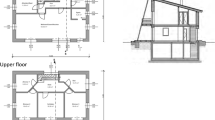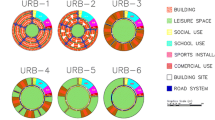Abstract
Goal, Scope, and Background
In Japan, the abatement of CO2 emission by households is a significant problem. Hence, it is necessary to formulate a long-term policy on the use of long-life and highly-insulating technologies for houses; these technologies are expected to reduce CO2 emission. The conventional LCA methodology can evaluate the environmental impact of these technologies, while not necessarily providing sufficient information to support policy-making because of its analytical perspective. The aim of the present study is to first develop a new methodology to examine the optimal use of technologies to formulate an environmental policy by considering dynamic socio-economic conditions. Second, as a demonstration, such a developed methodology is applied to explore an environmentally conscious housing policy for CO2 abatement in Japan.
Methods
A new methodology was developed, considering the context of a society where technologies are introduced, in order to determine the optimal configuration of technologies to minimize the cumulative environmental burden over time on a social scale. An inter-temporal linear programming model using an input-output table was formulated to make the methodology operational. Using the new model, the optimal use of long-life and thermal-insulating technologies for houses is examined to minimize CO2 emissions across the entire life cycle of all the houses in Japan.
Results and Discussion
The results of the model simulation indicate that not only long-life and highly-insulating technologies, but also short-life and poorly-insulating technologies, are required to minimize CO2 emissions over a long period. According to the conventional LCA, a house with a short life is inferior to that with a long life, and a house with poor insulation is inferior to that with high insulation. However, houses with a short life and/or poor insulation are introduced in a transition phase to a certain extent before the final stage is reached that is completely dominated by highly-insulated houses with a long life. In other words, the existing houses that were built in the past are gradually replaced with highly-insulated houses with a long life after first building houses with a short life and/or poor insulation. It is not always feasible or not necessarily an optimal solution on a social scale to introduce only a technology that is best evaluated by using the conventional LCA. Inferior technologies can also play a significant role because of various socio-economic conditions and requirements, e.g. population decline, limited housing budgets, and employment stability. Dynamic socio-economic conditions significantly influence the optimal mix of technologies for CO2 minimization in the entire society.
Conclusion and Recommendation
The present study suggests that it is critical to consider dynamic socio-economic conditions when examining technologies for selection with the aim of a long-term reduction of the environmental burden. The new methodology proposed can provide valuable information to support policy-making toward a sustainable society.
Similar content being viewed by others
Author information
Authors and Affiliations
Corresponding author
Rights and permissions
About this article
Cite this article
Hondo, H. A Method for Technology Selection Considering Environmental and Socio-Economic Impacts (11 pp). Int J Life Cycle Assessment 11, 383–393 (2006). https://doi.org/10.1065/lca2006.03.245
Received:
Accepted:
Published:
Issue Date:
DOI: https://doi.org/10.1065/lca2006.03.245




